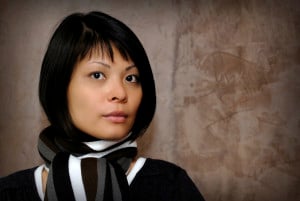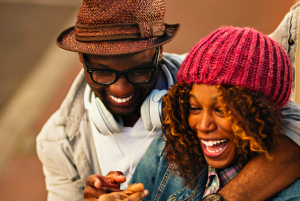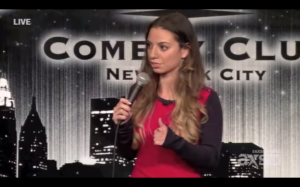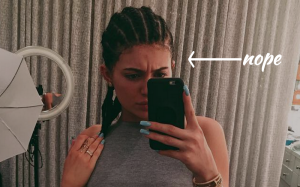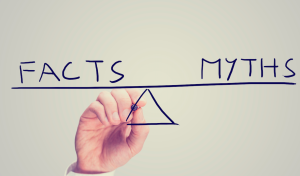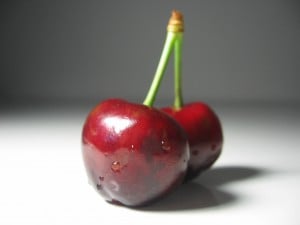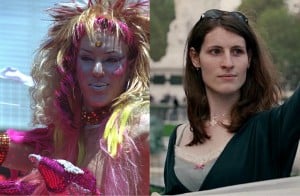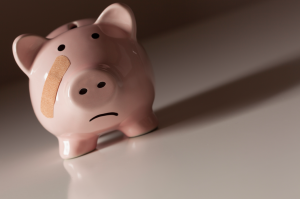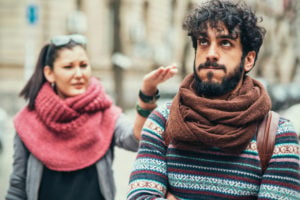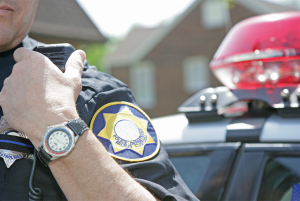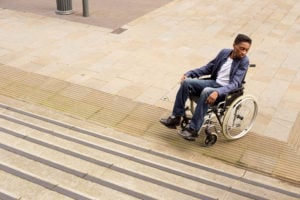
A person in a wheelchair sits sadly at the bottom of some stairs.
Originally published at The Establishment and republished here with their permission.
I am a black disabled woman.
Those six words convey the essence of who I am – not all that I am, but the lens through which I navigate the world.
I am black, and I am disabled. But often, these intersecting identities make me twice as much of an outsider.
I was raised by a single mother, who treated my older brother, able-bodied twin sister, and me as equals. Every bike, pair of roller skates, or scooter that they received, I got one, too. I grew up shielded from the eyes of strangers and blissfully unaware of the reality of the world.
In fact, I genuinely didn’t know that I was disabled until I reached middle school, when a boy mocked the way I walked across the cafeteria. Up until that moment, I had lived like I was able-bodied, and never considered that my walk was different than anyone else’s. I had never looked in the mirror and seen something or someone I didn’t like.
There was no going back to that bliss, though; the teasing made me painfully aware of my disability. I knew who I was now, and I didn’t like her.
I spent middle school and high school trying desperately to take up less space and draw as little attention to myself as possible.
In college, I made friends who never used my body as a punchline, who saw me for the things that I took pride in showing and entrusting them with. My college years were spent unlearning my self-hatred and growing into a version of myself that I could live with.
Yet still, I knew only a few disabled folks – and all of them were white.
When I first started my journey of disability activism, I believed that the entire community was inclusive on principle, that issues facing us disabled people of color specifically were just as important to white disabled folks as their causes were to us.
But in early 2016, when I started speaking about issues and problems specific to disabled people of color – for instance, the lack of representation in the disability community in both mass media and medical media, as well as the fact that almost 50% of all police shootings happen to disabled black people – I was met with racial slurs and demands to stop asking for my lived disabled experiences to enter the conversation.
This visceral response from disabled white people made me realize that in many ways, disabled people of color are really on their own.
After speaking to three of the hardest working, most visible, and brilliant disabled women of color I know, I found that I wasn’t alone in feeling this way.
Vilissa Thompson is the founder of Ramp Your Voice!, a group promoting disability self-advocacy. She has osteogenesis imperfecta, also known as brittle bone disease. Thompson is a social worker who got into disability activism because she didn’t see herself represented in the disabled community.
“I have experienced microaggressions when I have combatted disabled whites who are harmful to the community,” Thompson told me via email. “By ‘harmful,’ I mean that they have voiced racist and bigoted comments/posts that are severely problematic.”
When I participated in Thompson’s #DisabilityTooWhite hashtag, which criticized the media for whitewashing disability, I got a sense of what she means. After a few of my tweets got some attention, I spent the days that followed blocking white disabled folks who called me slurs and told me I was an embarrassment to the movement and community because, like Thompson, I was bringing the issue of erasure within the community to light.
Maysoon Zayid is a writer, actress, tap dancer, and advocate. Like me, she has cerebral palsy. I first became aware of her work when her TED talk, “I Got 99 Problems – Palsy Is Just One,” went viral, with well over seven million views. The talk helped shape the way that I saw cerebral palsy and in turn, myself.
Zayid, who dreams of acting on the soap opera General Hospital, became a disability advocate when she realized that disabled actors were being shunned in entertainment and media.
“I realize that in order to achieve my mission, I would need to change how Hollywood looked at and portrayed disability,” Zayid told me. “I am a fierce advocate for disabled actors playing disabled characters instead of non-disabled actors ‘cripping up.’ Those portrayals are harmful to the community. Visible disability, much like race, cannot be played and the portrayals come off as cartoonish and offensive. So I want to change that.”
Zayid is developing a comedy series written and starring herself titled If I Can Can, a show that will have disabled cast and crew members. It has taken her seven years to find producers.
While Zayid works to change the face and attitude of disability in Hollywood, she’s having to do the same thing in the disability and Muslim communities. She says that she spends a lot of time explaining to the disability community that when race comes to play in disability experiences, being a disabled person of color adds another layer of discrimination.
Zayid adds it was very hard to convince people that it’s even more dangerous to be a person of color and disabled, and that as a Muslim-identifying woman, she’s dealt with a lot of bigotry in the community. In fact, she was kicked out of the very first CP Facebook group she was in because she mentioned privilege.
Alice Wong, who has spinal muscular atrophy, is the founder and coordinator of the Disability Visibility Project, which promotes disability stories, history, and culture. Wong considers herself a researcher, storyteller, connector, and “digital amphibian” – which she describes as a creature that splashes between online and physical spaces. With Thompson, she is the author of #GetWokeADA26, a report that features the experiences of disabled people of color.
Wong uses the Disability Visibility Project to promote and champion the works of disabled people of color, and to share articles and essays related to disability in the hopes of starting conversations and dialogues.
From what I’ve seen, it works. The project’s Facebook page provides a space for conversations that just don’t get to happen in the more visible, mostly white spaces we are otherwise expected to go to for resources.
When the film Me Before You premiered, I saw discussion about its ableist nature and harmful portrayal of disability there before I saw it anywhere else.
Wong has worked tirelessly to give disabled people of color a voice in the spaces that normally shut us out. She hopes that collecting and amplifying the voices of disabled people of color will lead to greater awareness of what happens at the intersection of ableism and racism – including, she told me, the tokenism that can happen when someone is a noteworthy disabled person of color.
“While disability visibility is important, there are real trade-offs and risks to this visibility for marginalized folks. It’s tiring when people constantly ask me for resources or assistance within the disability or Asian American communities to represent some aspect of myself,” says Wong.
“The labor and responsibility of representation is very real and a bit unfair when there are so few ‘known’ to the disability community. It’s on them to seek out and understand [disabled people of color] and to discover new voices and people rather than relying on the usual suspects like myself.”
As visible disabled women of color, there are quite a few things that we hope the disability community learns about us.
For Wong, it’s an understanding that the disability rights movement’s principles of interdependence, community, and vulnerability look different for disabled people of color than they do for white disabled people – but that’s okay. What isn’t okay is calling someone divisive because they acknowledge these differences.
For Zayid, it’s the end of bigotry in the community. Thompson and I agree that the disability organizational leadership needs to come together and support disabled people of color. There are so many of us doing great work, and often, we aren’t even invited to participate in their projects and initiatives.
Disabled organizations should be hiring disabled people of color and allowing us to spearhead projects. They should acknowledge when they mess up and give a sincere apology, while taking steps to make sure it won’t happen again.
The disability community has a long way to go, and as we fight for inclusion of people of color in mainstream media, we must remember that the fight starts at home, in this community.
If your disability activism isn’t inclusive, it isn’t activism.
More from The Establishment:
- As A Disabled Person Of Color, I’m Done Trying To Be A ‘Model Minority’
- Steve Bannon Is Not Only Anti-Semitic, Racist, And Misogynistic – He Is Ableist
- How Disability Factors Into Police Violence
[do_widget id=’text-101′]
Keah is a reader not a fighter. A lover and a writer. She has a BA in Journalism from The State University of New York at Fredonia. Music is her third favorite thing after cheesecake and pizza, of course. Her work has appeared in The Toast, Femsplain, Catapult, and Atticus Review, among other publications. She laughs at her own tweets.
Search our 3000+ articles!
Read our articles about:
Our online racial justice training
Used by hundreds of universities, non-profits, and businesses.
Click to learn more
Most Read Articles
- « Previous
- 1
- …
- 30
- 31
- 32





